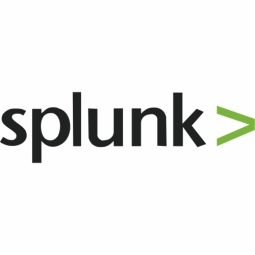C3 IoT
Full-Stack Development Platform for the Internet of Things
Overview
|
HQ Location
United States
|
Year Founded
2009
|
Company Type
Private
|
Revenue
$100m-1b
|
|
Employees
201 - 1,000
|
Website
|
Twitter Handle
|
Company Description
C3 IoT provides a full-stack IoT development platform (PaaS) that enables the rapid design, development, and deployment of even the largest-scale big data / IoT applications that leverage telemetry, elastic Cloud Computing, analytics, and Machine Learning to apply the power of predictive analytics to any business value chain.
C3 IoT also provides a family of turn-key SaaS IoT applications including Predictive Maintenance, fraud detection, sensor network health, supply chain optimization, investment planning, and customer engagement. Customers can use pre-built C3 IoT applications, adapt those applications using the platform’s toolset, or build custom applications using C3 IoT’s Platform as a Service.
Year founded: 2009
C3 IoT also provides a family of turn-key SaaS IoT applications including Predictive Maintenance, fraud detection, sensor network health, supply chain optimization, investment planning, and customer engagement. Customers can use pre-built C3 IoT applications, adapt those applications using the platform’s toolset, or build custom applications using C3 IoT’s Platform as a Service.
Year founded: 2009
IoT Solutions
The Internet of Things (IoT) and advanced Data Science are rewriting the rules of competition. The advantage goes to organizations that can convert petabytes of freshly arrived and historical data to predictions – more quickly and more accurately than their competitors. Payoffs include better product and service design, promotion, and pricing; optimized supply chains that avoid delays and increase output; reduced churn; higher average revenue per customer; and Predictive Maintenance that avoids downtime for vehicle fleets and manufacturing systems while lowering service costs.
To make sense of and act on the unprecedented volume, velocity, and variety of data in real time, companies are applying the sciences of big data, advanced analytics, Machine Learning, and Cloud Computing. Products themselves are being redesigned to accommodate connectivity and low-cost sensors, creating a market opportunity for adaptive systems, a new generation of smart applications, and a renaissance of business process reengineering. The new IT paradigm will reshape the value chain by transforming product design, marketing, manufacturing, and after-sale services.
C3 IoT offers a new generation of smart, real-time applications, overcoming the development challenges that have blocked companies from realizing the potential of the Internet of Things. Proven in more than 20 enterprise-scale production environments, the C3 IoT Platform is PaaS for the design, development, deployment, and operation of next-generation IoT applications and business processes.
To make sense of and act on the unprecedented volume, velocity, and variety of data in real time, companies are applying the sciences of big data, advanced analytics, Machine Learning, and Cloud Computing. Products themselves are being redesigned to accommodate connectivity and low-cost sensors, creating a market opportunity for adaptive systems, a new generation of smart applications, and a renaissance of business process reengineering. The new IT paradigm will reshape the value chain by transforming product design, marketing, manufacturing, and after-sale services.
C3 IoT offers a new generation of smart, real-time applications, overcoming the development challenges that have blocked companies from realizing the potential of the Internet of Things. Proven in more than 20 enterprise-scale production environments, the C3 IoT Platform is PaaS for the design, development, deployment, and operation of next-generation IoT applications and business processes.
Key Customers
Enel, ENGIE, Cisco, Exelon, Endesa, Eversource, Pella, PG&E, U.S. Department of State
IoT Snapshot
C3 IoT is a provider of Industrial IoT platform as a service (paas), application infrastructure and middleware, analytics and modeling, functional applications, sensors, and infrastructure as a service (iaas) technologies, and also active in the aerospace, electrical grids, equipment and machinery, finance and insurance, healthcare and hospitals, oil and gas, retail, telecommunications, transportation, and utilities industries.
Technologies
Use Cases
Functional Areas
Industries
Services
Technology Stack
C3 IoT’s Technology Stack maps C3 IoT’s participation in the platform as a service (paas), application infrastructure and middleware, analytics and modeling, functional applications, sensors, and infrastructure as a service (iaas) IoT Technology stack.
-
Devices Layer
-
Edge Layer
-
Cloud Layer
-
Application Layer
-
Supporting Technologies
Technological Capability:
None
Minor
Moderate
Strong

Supplier missing?
Start adding your own!
Register with your work email and create a new supplier profile for your business.
Case Studies.

Case Study
Vehicle Fleet Analytics
Organizations frequently implement a maintenance strategy for their fleets of vehicles using a combination of time and usage based maintenance schedules. While effective as a whole, time and usage based schedules do not take into account driving patterns, environmental factors, and sensors currently deployed within the vehicle measuring crank voltage, ignition voltage, and acceleration, all of which have a significant influence on the overall health of the vehicle.In a typical fleet, a large percentage of road calls are related to electrical failure, with battery failure being a common cause. Battery failures result in unmet service agreement levels and costly re-adjustment of scheduled to provide replacement vehicles. To reduce the impact of unplanned maintenance, the transportation logistics company was interested in a trial of C3 Vehicle Fleet Analytics.
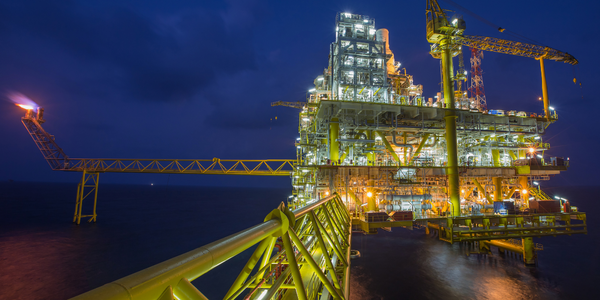
Case Study
Large Oil Producer Leverages Advanced Analytics Platform
Approximately 17,000 wells in the customer's portfolio have beam pump artificial lift technology. While beam pump technology is relatively inexpensive compared to other artificial lift technology, beam pumps fail frequently, at rates ranging from 66% to 95% per year. Unexpected failures result in weeks of lost production, emergency maintenance expenses, and costly equipment replacements.

Case Study
Driving Network Efficiency and Fraud Detection Efforts
Baltimore Gas and Electric Company (BGE) wanted to optimize the deployment and ongoing health of its advanced metering infrastructure (AMI) network and identify and reduce unbilled energy usage. BGE wanted a solution to deliver an annual economic benefit of $20 million.

Case Study
Predictive Maintenance for Building Equipment
Unexpected failures of building equipment can result in significant problems for facility operators. For example, refrigeration system downtimes result in expensive loss of perishables for retailers, or drugs for pharmacies. HVAC system downtimes drive need for emergency maintenance activities, and result in reduced customer satisfaction.

Case Study
Predicting, Diagnosing and Reducing Equipment Failures
One of Europe’s largest integrated electric power companies was looking for analytics solutions to reliably forecast equipment failure and improve condition-based maintenance for its coal-fired power plant. With a diverse array of coal, oil, and gas/CCGT power plants, the utility’s more than 50GW worldwide generating portfolio has been under pressure to streamline global operations and reduce generating costs (both CapEx and operations /maintenance O&M expenses) by 7-10%.

Case Study
Reducing Energy Costs Across Pella’s Manufacturing Plants
Pella’s commitment to continually improve its processes for its team members and the environment has led the company to seek innovative technologies that advance overall productivity and the quality of its manufacturing operations.

Case Study
Worldwide IT Leader Manages Enterprise Energy and Sustainability
To understand their complex global energy consumption and emissions footprint, Cisco needed a software solution to help them manage disparate energy- and emissions-related data inputs across their enterprise, integrate and analyze their sustainability and energy metrics, embark upon energy and emissions mitigation projects, and report results publicly. Cisco also needed to perform detailed interval analysis of their high energy-usage facilities.

Case Study
Enabling Enterprise-Wide Digital Transformation
Global energy leader ENGIE is implementing an ambitious digital transformation strategy that is vital to the Fortune Global 500 company’s plan to confront the major challenges posed by climate change and promote people’s access to reliable, innovative, socially responsible, low carbon, and decentralized energy. To do this, ENGIE plans to invest €1.5 billion in new businesses and digital over the next three years.

Case Study
Largest Production Deployment of AI and IoT Applications
To increase efficiency, develop new services, and spread a digital culture across the organization, Enel is executing an enterprise-wide digitalization strategy. Central to achieving the Fortune 100 company’s goals is the large-scale deployment of the C3 AI Suite and applications. Enel operates the world’s largest enterprise IoT system with 20 million smart meters across Italy and Spain.

Case Study
Enterprise Data Analytics Platform and AMI Operations
In tandem with its 6 year-long smart meter rollout plan, Con Edison sought to implement Advanced Metering Infrastructure (AMI) operations on top of a comprehensive enterprise data analytics platform for improved operational insight and customer service for its base of more than four million customers. In order to improve customer service and operations across its region, one of the largest integrated utilities in the United States has rolled out the C3 AI Suite and C3 AMI Operations application on AWS. Con Edison’s project objectives were to deliver on the utility’s commitments for presenting customer data, establish AMI operations across 5 million smart meters to ensure operational health, and build a federated data image platform for analytic capabilities. The utility’s smart meter deployment will generate between 100 terabytes and 1 petabyte of data per year, so choosing a platform that could scale and continue to perform analytics on an ever-larger data set was vital.

Case Study
Auto-Generating Digital Twins for Enhanced Asset Management Using the C3 AI Platform
One of Europe’s largest manufacturing companies, delivering billions of dollars of industrial equipment globally, faced the challenge of maintaining accurate digital bills of materials (BOMs) for its complex assets. These BOMs, which are crucial for creating asset digital twins for monitoring, diagnosis, and predictive maintenance, were difficult to maintain due to downstream changes in asset configuration not being reflected in engineering drawings. The company was spending over $100 million annually, employing hundreds of technical specialists to manually extract information from various unstructured data sources to create these BOMs. This process was not only costly but also time-consuming, often taking months to create a single digital BOM. The manufacturer was in need of a scalable, automated solution that could perform this parsing and analysis across all its product lines.

Case Study
Enterprise AI for Predicting HVAC Chiller Failures: A Case Study
The building systems division of a Fortune 500 manufacturer, which provides equipment and services for optimizing building energy expenditures, was facing a significant challenge. The division was conducting chiller maintenance reactively, leading to business disruptions, downtimes, and costly emergency repairs. This reactive approach was negatively impacting customer satisfaction. The manufacturer needed a solution that could rapidly integrate all relevant equipment and facility data sources. The goal was to reduce downtime and costly, unscheduled maintenance for its commercial Heating, Venting & Cooling (HVAC) chiller systems.

Case Study
Optimizing Semiconductor Manufacturing Yield with IoT
A large U.S.-based manufacturer of high-performance semiconductors was facing a significant challenge in optimizing the manufacturing process of its wireless products. The company, which designs and delivers a broad set of cutting-edge products including radio frequency filters, amplifiers, modulators, attenuators, and more, was experiencing lower than expected overall yield in some of its most complex products. This was affecting the company's productivity and profitability, and there was a need for a solution that could predict low-yield wafers early in the process and identify process improvements to increase overall yield.

Case Study
Enterprise AI for Demand Forecasting and Production Scheduling in Global Agribusiness
A global agribusiness and food manufacturer, producing over 80 million pounds of food products per year across eight production lines, faced significant challenges in demand forecasting and production scheduling. The company's only customer, a global retailer, exhibited highly variable demand, leading to discrepancies with the manufacturer's weekly demand forecast. Traditional demand forecasting solutions, based on statistical algorithms, were unable to cope with the short lead times and daily sales orders due to the short shelf life of food products. This resulted in unfulfilled customer orders. Additional rule-based solutions procured to improve production scheduling also failed to optimize schedules and significantly improve manufacturing operations.

Case Study
Execute Energy and Sustainability Management Solutions: A Fortune 100 Technology Company Case Study
The Fortune 100 technology company faced a significant challenge in managing its diverse portfolio of over 500 facilities worldwide, which ranged from standard office buildings to energy-intensive labs and data centers. The company required a software solution that could effectively manage energy and greenhouse gas (GHG) emissions, integrate and analyze sustainability and energy metrics, and report results from energy and emissions mitigation projects for its annual sustainability report and the Carbon Disclosure Project. The company also needed to perform detailed interval analysis on thousands of opaque energy-consuming racks of equipment, identify and analyze energy efficiency opportunities, and manage a global portfolio of low-cost, capital-intensive energy efficiency and emissions mitigation projects.

Case Study
Revolutionizing Commercial Credit with AI
One of the largest banks in Asia, Africa, and the Middle East, with a presence in over 60 countries, was grappling with the complexity of its commercial lending process. The bank, responsible for providing clients with more than $100 billion worth of credit, had to efficiently offer a variety of credit products and services to thousands of businesses across numerous countries and sectors. The process of assessing the creditworthiness of its clients was time-consuming and required the collection, review, and analysis of thousands of fields of both qualitative and quantitative information. This included financial statement line items, performance metrics, credit history, and natural language assessments of the borrower’s business prospects. The bank's credit officers had to navigate disparate systems, collaborate with relationship managers and credit analysts on credit structure and conditions, and request additional information before making a final decision. The average time-to-decision was often measured in weeks.

Case Study
Enterprise AI for HealthTech: Streamlining Supply Chain Operations
The global HealthTech company, with over 35 manufacturing facilities worldwide, faced a significant challenge due to its complex IT landscape. The company's growth, both organically and through strategic acquisitions, led to a scattered supply chain data across various ERP systems. This complexity hindered the company's ability to gain crucial business insights and answer critical questions such as prioritizing product lines or SKUs, identifying 'lazy inventory' in the supply chain, and optimizing inventory allocation across distribution centers. These challenges became even more critical during the peak of the COVID-19 pandemic, particularly for the company's respiratory ventilator products.

Case Study
Global 100 Enterprise-Wide Digital Transformation: ENGIE's IoT Journey with C3 AI and AWS
ENGIE, the world's largest power producer, was faced with the challenge of implementing an enterprise-wide digital transformation and establishing a center for IoT excellence. This transformation was to span across various sectors including customer service, metering, energy management, and maintenance. The project was to be implemented across 24 business units in 70 countries, requiring a significant staffing investment. The first applications to be developed and deployed on the ENGIE digital platform included performance optimization for gas power plants, efficiency optimization of heating and cooling plants, energy analysis and management for enterprise and consumer customers, and anomaly detection of wind turbines.

Case Study
Dynamic Optimization of Inventory Management in Aerospace Manufacturing
A global manufacturer of aircraft engines, avionics, and other aviation products was grappling with the complexity of managing its supply chain. The company maintains 90 major product lines that require tens of thousands of parts from hundreds of manufacturers spread across the globe. The costs of maintaining inventory were significant, with just two components of its aircraft engines accounting for $600 million in parts inventory, including $400 million in fast-moving inventory. The company was seeking ways to optimize inventory levels to mitigate supplier delays and improve gross margins and revenue.
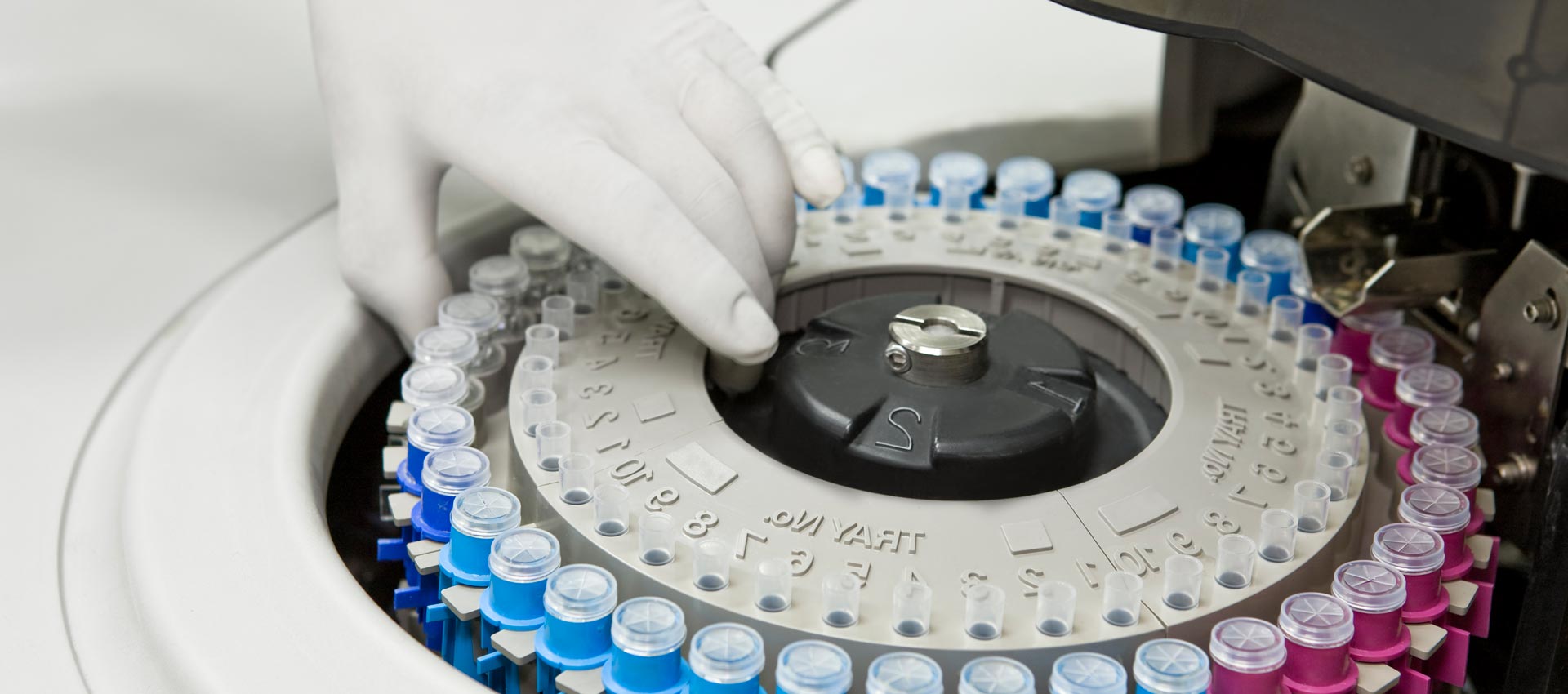
Case Study
Improving Uptime and Asset Reliability with AI in Biomanufacturing
Centrifuges, critical assets in the upstream stage of the biomanufacturing process, were experiencing unplanned failures that halted operations and caused significant revenue loss for a biotechnology company. The existing rules-based monitoring systems were producing an overwhelming number of false and inadequate alerts, with an average of 60 alerts a month. However, these alerts only captured 13% of actual failures and 71% of them were false alarms. The system also provided an average of only 45 minutes of lead time before a shutdown, leaving operators with a narrow window for preventative actions. The existing system was unable to flexibly incorporate new data sources or adjust preset sensor thresholds to improve the accuracy or comprehensiveness of alerts. The company needed an AI-led approach that could integrate all relevant data sources and apply advanced machine learning techniques to improve the recall and precision of failure predictions.
Similar Suppliers.
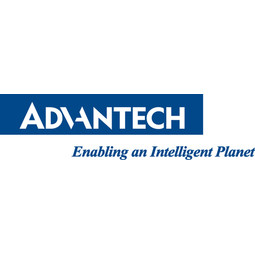
Supplier
Advantech
Founded in 1983, Advantech is a leader in providing trusted innovative embedded and automation products and solutions. Advantech offers comprehensive system integration, hardware, software, customer-centric design services, and global logistics support; all backed by industry-leading front and back office e-business solutions.
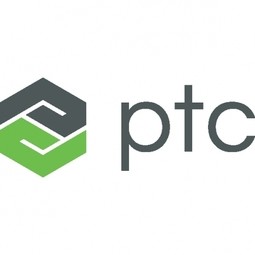
Supplier
PTC
PTC is a global provider of technology platforms and solutions that transform how companies create, operate, and service the "things" in the Internet of Things (IoT). The company's next-generation ThingWorx technology platform gives developers the tools they need to capture, analyze, and capitalize on the vast amounts of data being generated by smart, connected products and systems. The company's field-proven solutions are deployed in more than 26,000 businesses worldwide to generate a product or service advantage. PTC's award-winning CEO, considered an industry thought leader, co-authored the definitive guides to the impact of the IoT on business in the Harvard Business Review.

Supplier
Altair
Altair is a leading provider of enterprise-class engineering software enabling innovation, reduced development times, and lower costs through the entire product lifecycle from concept design to in-service operation. Our simulation-driven approach to innovation is powered by our integrated suite of software which optimizes design performance across multiple disciplines encompassing structures, motion, fluids, thermal management, electromagnetics, system modeling and embedded systems, while also providing data analytics and true-to-life visualization and rendering.
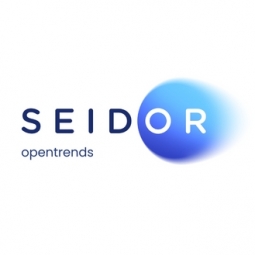
Supplier
Opentrends
Opentrends provides the most advanced custom software solutions to place companies in the Digital Transformation path, allowing them to achieve innovation advantage and contribute to their growth acceleration.More than 18 years delivering innovative projects of high technological complexity in a wide range of industries, while guaranteeing quality and alignment with our client’s objectives. In fact, over a hundred global companies across various industries have full Trust in our unique ability to design, build, implement, and integrate complex software innovations into their organizations.Let’s excel your digital future today.
Partners.
---nasdaq--amzn_14.jpg)
Supplier
Amazon Web Services
Amazon Web Services has developed the managed cloud platform AWS IoT to let connected devices easily and securely interact with cloud applications and other devices. AWS IoT can support billions of devices and trillions of messages, and can process and route those messages to AWS Endpoints and to other devices reliably and securely. With AWS IoT, your applications can keep track of and communicate with all your devices, all the time, even when they aren’t connected.On top of this platform, AWS also offers a variety of analytics solutions by AWS or third-party suppliers that can help meet all kinds of needs related to data analysis.



